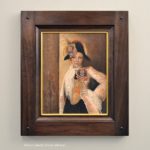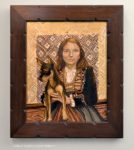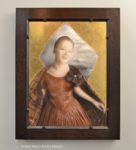In 1470, fire from the daytime sky—the sun—allowed the young Leonardo Da Vinci to use parabolic “fire mirrors” to concentrate the solar rays to temperatures hot enough to solder copper plates together to form the ball that surmounts Brunelleschi’s dome on the Cathedral of Florence. 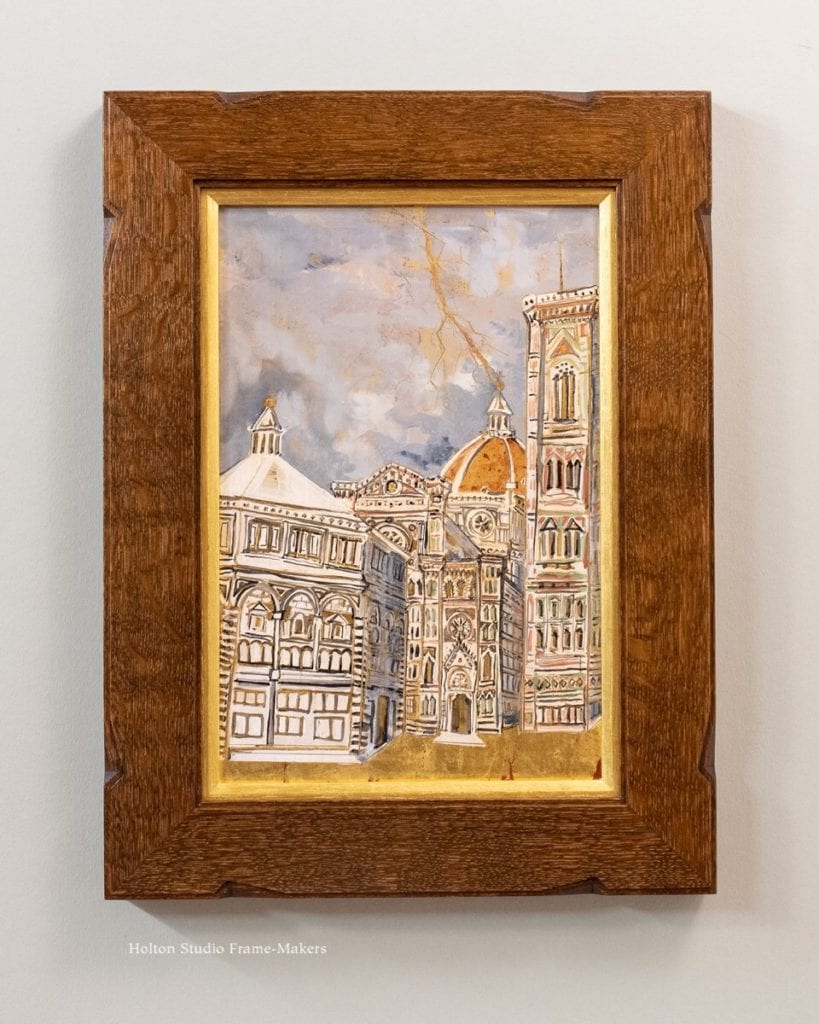 In 1601 fire from the night sky—lightning—hit the ball and knocked it to the ground. (The spot where it landed is marked to this day.) It wasn’t the first time the ball had been hit by lightning. It is, after all, metal and crowns one of the city’s tallest buildings. So before restoring it atop the dome, the church did the prudent thing and filled the cross on top of the ball with relics. The ball still attracts lightning, and due to the relics—and possibly the help of lightning rods installed in the 1700’s—it effectively protects the cathedral.
In 1601 fire from the night sky—lightning—hit the ball and knocked it to the ground. (The spot where it landed is marked to this day.) It wasn’t the first time the ball had been hit by lightning. It is, after all, metal and crowns one of the city’s tallest buildings. So before restoring it atop the dome, the church did the prudent thing and filled the cross on top of the ball with relics. The ball still attracts lightning, and due to the relics—and possibly the help of lightning rods installed in the 1700’s—it effectively protects the cathedral.
For artist and entrepreneur Karima Cammell, stories of lightning and Leonardo’s copper ball aren’t hearsay. One summer day when Karima was visiting Florence, a thunderstorm came up. The artist ducked into a doorway and turned around just in time to catch Leonardo’s ball serving its purpose.
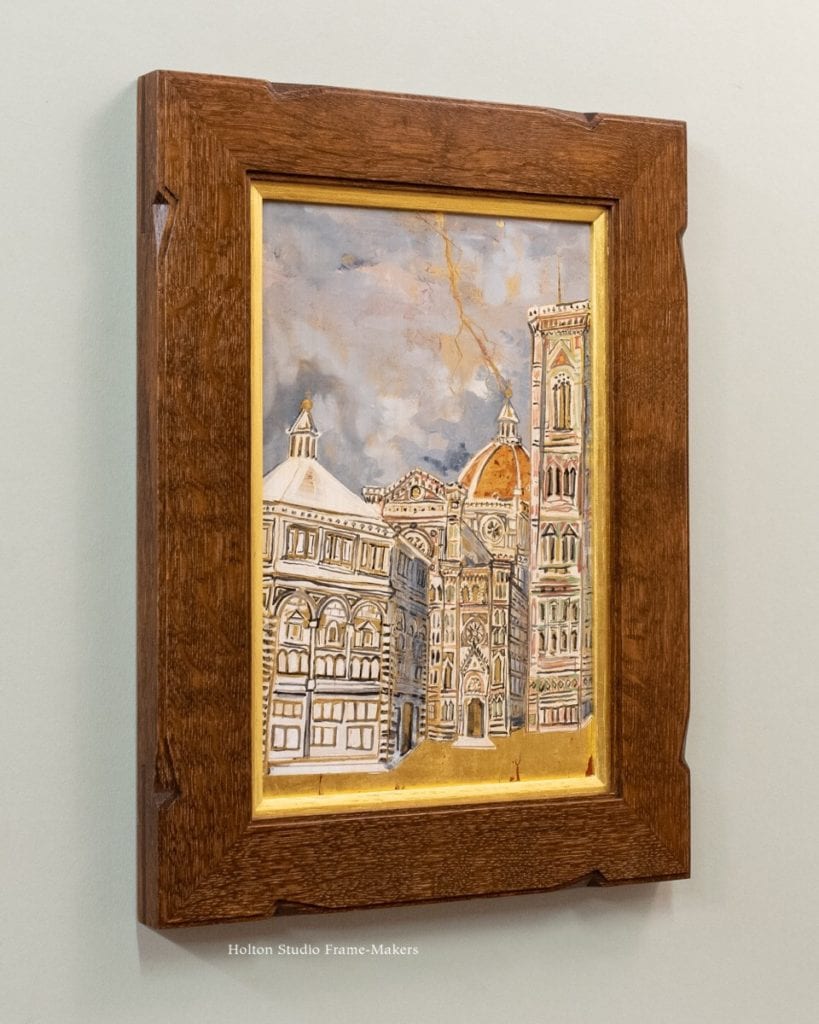
Karima Cammell, “Blue Lightning,” 2020. Egg tempera, 8″ x 10″. Framed in quartersawn white oak (Van Dyke stain), in a 2″ profile No. 15.16 CV, with a chamfer pattern to articulate the corners; beveled gilt liner.
Karima frequents Italy, and especially loves to take part in Carnivale in Venice, but had to leave early this year due to the pandemic and the strict quarantine orders imposed on Italy. As she paints now, she tells me, many images, from Venetian “plague doctor” masks to lightning from out of the blue, have taken on new meaning.
My own feelings of poignancy sparked by this picture, and especially by framing it, are due to its depiction of Giotto’s Tower, at the far right. I wrote about it several years ago in my post, “What Ruskin Saw Framed In the Stones of Florence.” Before I visited Florence, I had studied the tower in books and online, becoming particularly familiar with John Ruskin’s 1872 lecture on the tower and its evidence of the natural and original—and now lost—unity of the arts. The argument is punctuated with a profound statement about the significance of picture frames: their relationship to paintings being, for Ruskin, emblematic of that primal unity of all the arts.* This deep understanding of the cooperative nature and history of the arts is, for me, one of the great revelations of Ruskin’s work—as well as a considerable inspiration and foundation for my understanding of my purpose as a frame-maker.
So when I finally visited the city and came around a corner to see the tower and its accompanying Duomo and Baptistry from exactly the point of view from which Karima painted them, you can imagine how I felt. It was something like being struck by lightning.
More Posts on Paintings by Karima Cammell—
- Karima Cammell, “Self-Portrait as an Egg Tempera Painter” See post…
- Karima Cammell, “Valentina Brown” See post…
- Karima Cammell, “Raphaela Hero Brown” See post…
![]()
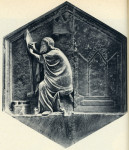 * Directing his listeners’ attention to one of the hexagonal bas reliefs near the base of the tower—the one depicting the art of painting—Ruskin pointed out the frame that occupies nearly half of the composition and awaits the completion of the painting. It’s the reward of the painter, whose eagerness is suggested by the his tipping stool. Ruskin pointed to this representation of the art of painting, set in the larger context of the entire set of hexagonal bas relief panels that encircle the tower and honor the arts, and asked his audience, “Have you ever considered, in the early history of painting, how important also is the history of the frame maker? It is a matter, I assure you, needing your very best consideration. For the frame was made before the picture. The painted window is much, but the aperture it fills was thought of before it.” The whole lecture is here. My post “What Ruskin Saw Framed in the Stones of Florence” is here.
* Directing his listeners’ attention to one of the hexagonal bas reliefs near the base of the tower—the one depicting the art of painting—Ruskin pointed out the frame that occupies nearly half of the composition and awaits the completion of the painting. It’s the reward of the painter, whose eagerness is suggested by the his tipping stool. Ruskin pointed to this representation of the art of painting, set in the larger context of the entire set of hexagonal bas relief panels that encircle the tower and honor the arts, and asked his audience, “Have you ever considered, in the early history of painting, how important also is the history of the frame maker? It is a matter, I assure you, needing your very best consideration. For the frame was made before the picture. The painted window is much, but the aperture it fills was thought of before it.” The whole lecture is here. My post “What Ruskin Saw Framed in the Stones of Florence” is here.
